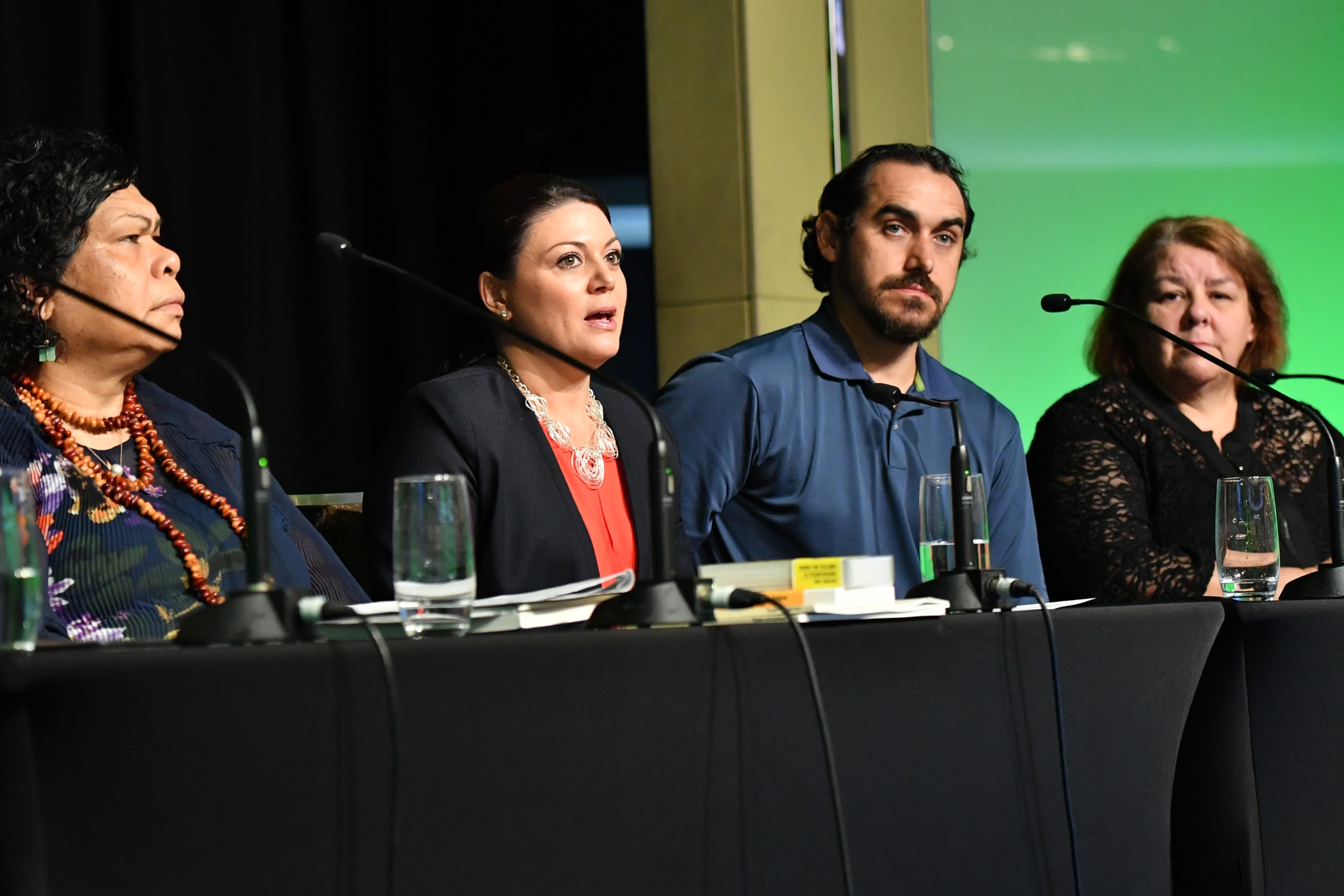Learning from the land
27 Mar 2018
For Indigenous Australians, land is deeply intertwined with law and spirituality.
More than 60,000 years of stories and practices around respecting and preserving the environment have been passed down through generations to form the most sustainable civilisation on earth.

“Take scarred trees for example,” explained Rueben Berg, Director of Indigenous Architecture Victoria, addressing delegates at the recent Green Cities Reconciliation Breakfast.
“We figured out a long time ago that if we used a whole tree to make a canoe or shelter that we’d have nothing left, that it wasn’t resourceful.
“Instead we take just a layer of bark, so that the tree gets to live.”
We have a lot to learn from Indigenous Australians when it comes protecting our natural environment.
And so it was fitting that the Green Building Council of Australia gathered at Barangaroo with industry members, to launch its inaugural Reconciliation Action Plan (RAP).
The place Barangaroo was named after the Cammeraygal woman and Indigenous leader who was known for her strength and determination in the face of colonial settlement.
It’s her resilience that we can draw from as we embark on a journey to build bridges with Indigenous Australians, and influence industry to adopt more sustainable practices.
The launch of our Reflect RAP speaks to industry, to our members and to non-Indigenous Australians about why we are walking the walk towards reconciliation.
Welcoming guests at the launch of our RAP, GBCA CEO Romilly Madew revealed how we will embark on this journey.
“Over the next year, we will be examining how the Green Star rating system for buildings and communities can recognise and reward placemaking that honours our First Australians.
“But of equal importance, we have a role to play as our industry’s storytellers, and to share the ideas and initiatives that are helping our members make progress on our collective journey towards reconciliation.”
So how can implementing a RAP create a positive impact on Indigenous communities?
Reconciliation Australia CEO Karen Mundine explains that the benefits are plentiful.
“Each year we ask our RAP partners to report on their performance against key targets to track and measure the impact of the RAP program and we’ve discovered a lot.
“Organisations with a RAP have collectively employed nearly 20,000 Aboriginal and Torres Strait Islander peoples.
“The same organisations have purchased more than $169 million worth of goods and services from Supply Nation accredited businesses, provided over $14 million worth of education scholarships for Aboriginal and Torres Strait Islander students and given $16 million in pro bono support to Indigenous communities.”
The momentum around reconciliation is building.
Green Cities 2018 kept the conversation alive, as we invited key Indigenous people active in the built environment to discuss industry challenges and opportunities.
Rueben drew a connection between sustainability and Aboriginal culture, like the example of scarred trees.
But he also made an important point: How can cities and communities better reflect Aboriginality?
“Most people think of Indigenous architecture as the cultural centre at Uluru for example. There’s this idea that Aboriginal places are ‘somewhere else’.
“The same reason Melbourne was chosen as a great spot for a city is the same reason people have lived here for tens of thousands of years.
“So reconciliation is an opportunity to think about the landscape and buildings can help us get a sense of our history and create belonging.”
Lendlease Executive Lead Indigenous Engagement and Reconciliation, Cath Brokenborough pointed to the remote NSW north-western town of Bourke as an example of how communities can be transformed with Indigenous culture in mind.
“If you can make a positive change in Bourke, you can do it anywhere,” she said.
Bourke is home to 30,000 residents, 30 per cent of whom are Indigenous.
Per capita, it’s also been named the most dangerous place on earth.
Social inequality gaps in the town include high death rates in children, poor school attendance, food security, homelessness and domestic violence.
Cath says that Lendlease has engaged with the local community there to find long term solutions to these problems.
“You need early and sustained engagement. Community trust can impact the value of assets, and the choices people make in connecting with our company.
“You need to ask yourself: What are the community programs we can build upon? What are the legacy issues? How can we nurture that community?
“It can be easy as starting with a cup of tea – but what you do want is Aboriginal organisations and leadership running these initiatives.”
Indeed, empowerment is key if we want to fully embrace reconciliation.
As Supply Nation CEO, Laura Berry shared with us, less than 0.1 per cent of Australian businesses are run by Indigenous people.
“Research shows that using a First Nations business delivers $4.41 of social return for every $1 spent.
“This creates momentous change throughout the whole community and builds a society with equal opportunity for all members.”
At the launch of our RAP and the flow on discussions sparked at Green Cities 2018, there’s a tangible buzz around reconciliation.
It’s an opportunity for us to reflect on how our organisations consider Indigenous Australians in the sustainable transformation of our built environment.
It’s also a chance for us to encourage, our industry, to walk the road to reconciliation together.
Most of all, it’s time for us to listen to our First Nations people and to the land.
Much like reverence for our natural environment binds Indigenous law and spirituality together, it can also govern the way we build our cities.